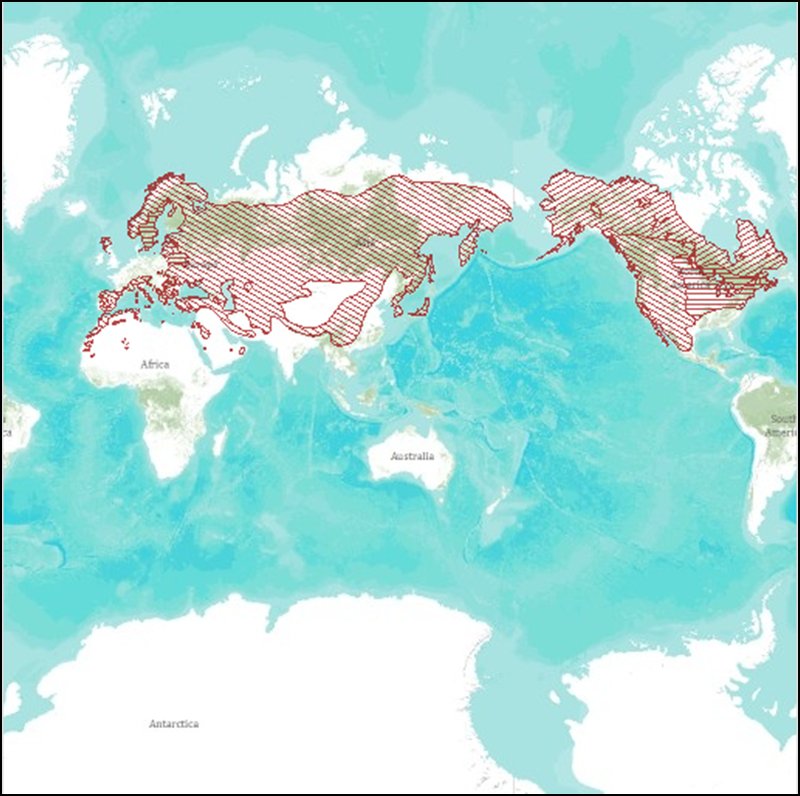
In this guide, we’ll explore the habitats and ranges of different eagle species across the globe. From the high mountains to the vast wetlands, you’ll learn where to spot these incredible birds in their natural environments. Whether you’re a birdwatching enthusiast or just curious about wildlife, knowing where eagles live can enhance your experience in nature. So, grab your binoculars, and let’s dive into the world of eagles and the places they call home!
Understanding Eagle Habitats: An Overview
Eagles are versatile creatures, adapting to a variety of environments. Their habitats range from rugged mountains to serene lakesides, ensuring they can thrive in multiple locations. The key to finding them lies in understanding their preferred surroundings.
Think about it this way: eagles need places to roost, hunt, and raise their young. This means they’re often found near large bodies of water like rivers and lakes, which are teeming with fish—their primary food source. Additionally, they favor high vantage points, such as tall trees or cliffs, where they can spot prey from afar.
Another factor to consider is climate. Different eagle species thrive in different climates. For instance, the Bald Eagle, famous in North America, enjoys temperate regions, while the Golden Eagle can survive in both mountainous and arid areas. Understanding these nuances is essential for anyone hoping to spot an eagle in the wild.
North America: The Land of the Bald Eagle
When it comes to spotting eagles, North America is a prime location, especially for the Bald Eagle. Found throughout the continent, these stunning birds are often seen near large bodies of water, such as lakes, rivers, and coastal regions.
In the U.S., places like the Chesapeake Bay in Maryland and the Mississippi River attract many Bald Eagles, especially during the winter months. During this time, they migrate south from their breeding grounds in Canada and Alaska. If you find yourself in these areas, keep an eye out for their distinctive white heads and tails, which contrast sharply with their dark brown bodies.
Honestly, it’s a sight to behold when they dive for fish or soar gracefully overhead. These eagles often make their homes in towering trees or cliffs, making it easier for them to scout for food. If you’re eager to see them, consider visiting national parks like Everglades or Yellowstone, where these birds are seen often.
Europe: The Golden Eagle and Beyond
In Europe, the Golden Eagle reigns supreme. This impressive bird can be found in mountainous regions such as the Scottish Highlands and the Alps. Golden Eagles prefer vast, open spaces where they can hunt small mammals and birds.
One fascinating aspect of their behavior is how they hunt. They often soar high in the sky, using their keen eyesight to spot prey. If you’re hiking in the mountains, keep your eyes peeled; their tawny color helps them blend into the rocky landscape.
While you’re enjoying the scenery, look out for their nests, which they often build on cliff ledges. These nests, made from sticks and lined with softer materials, are a sight of engineering marvel. Imagine soaring above the landscape, surveying your territory—it’s no wonder they’re so admired.
Asia: The Majestic Steller’s Sea Eagle
Moving on to Asia, here’s where you’ll find the Steller’s Sea Eagle—one of the heaviest eagles in the world. This magnificent bird is primarily found in the coastal regions of eastern Russia, particularly around the Sea of Okhotsk.
Steller’s Sea Eagles prefer habitats near water, where they can hunt for fish, particularly salmon. Their striking appearance, with bright yellow beaks and dark plumage, makes them easy to identify among other birds. Imagine standing on the rocky shores of Kamchatka, watching as these giants swoop down to catch their dinner—it’s an unforgettable experience.
During the winter months, you can see them traveling in flocks to find food. If you’re lucky enough to visit this region during that time, keep your camera ready. Just remember, these birds are best spotted at dawn or dusk when they’re most active.
Australia: The Wedge-Tailed Eagle
In Australia, the Wedge-Tailed Eagle takes center stage. These eagles are adaptable and can be found across much of the continent, from urban areas to remote outback regions. They love open grassy plains and woodlands, where they can easily hunt for rabbits, kangaroos, and even reptiles.
You might be wondering about their name. The Wedge-Tailed Eagle has a distinctive tail shape that fans out like a wedge—an easy way to spot them in the sky. If you’re driving through the Australian countryside, you might see them soaring effortlessly above, using thermals to gain altitude.
If you ever visit Kakadu National Park or Uluru, you’re in for a treat. These majestic creatures are often seen in these areas. Just imagine setting up your camp and hearing the famous call of the wedge-tail echoing through the night. It’s truly something special.
Africa: The African Fish Eagle
When you think of Africa, you can’t overlook the stunning African Fish Eagle. Easily recognized by its white head and chest, these eagles are often found near lakes and rivers, especially in countries like Botswana and Zambia.
The African Fish Eagle’s call is iconic, often described as a series of hauntingly beautiful whistles. If you’re on a safari, the chances of hearing this sound are pretty high. They are often seen perched in trees along the riverbanks, scanning the waters for their next meal.
One of the best places to spot them is around the Okavango Delta, where the abundance of fish makes it a perfect hunting ground. Picture yourself in a boat, gliding silently through the waters, and suddenly spotting one diving down to grab a fish—it’s a moment you won’t forget.
Conservation Efforts: Protecting Eagle Habitats
While eagles are incredible creatures, many species face threats from habitat loss, pollution, and climate change. It’s vital that we understand the importance of conservation efforts to protect these magnificent birds.
Organizations worldwide are working to preserve eagle habitats and educate the public about their ecological importance. For example, in North America, efforts to protect the Bald Eagle have led to remarkable recovery. Policies such as the Endangered Species Act have been crucial in safeguarding their nesting sites and ensuring their populations thrive.
As a nature enthusiast, you can play a part too! Participate in local conservation initiatives, support wildlife organizations, or even just educate your friends about the importance of protecting these natural wonders. Every little action counts.
Final Thoughts: Embracing the Beauty of Eagles
Spotting an eagle in the wild can be a breathtaking experience, connecting us to nature in a profound way. Whether you’re hiking in the mountains, cruising along a river, or relaxing by a lake, knowing where to find these magnificent birds adds a deeper layer to your outdoor adventures.
From North America’s Bald Eagle to Asia’s Steller’s Sea Eagle, each species has its unique charm and habitat. Next time you’re out in nature, keep your eyes peeled and your binoculars ready. Who knows? You might just spot one of these majestic birds soaring overhead, reminding you of the beauty that exists in the wild.
So, get out there and explore the diverse habitats where these incredible creatures live. And remember, when you witness an eagle flying high, it’s not just a bird; it’s a symbol of nature’s grandeur, inspiring us all to cherish and protect our planet’s wildlife.

